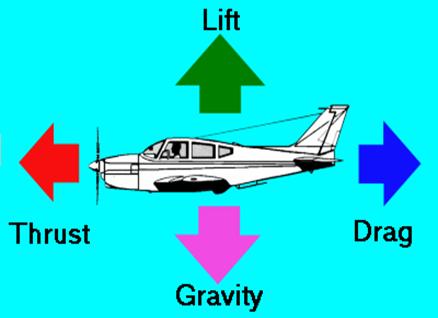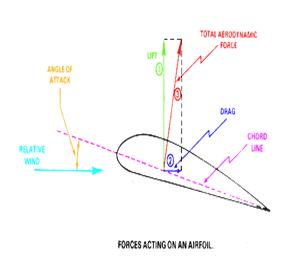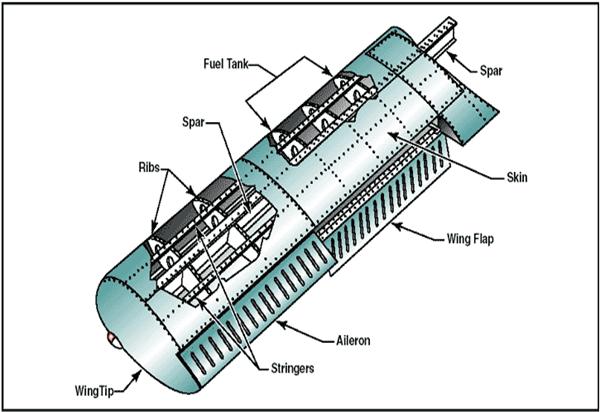





Published on Feb 14, 2025
Aerodynamics is a branch of dynamics concerned with studying the motion of air, particularly when it interacts with a moving object. Aerodynamics is a subfield of fluid dynamics and gas dynamics , with much theory shared between them. Judging from the story of Daedalus and Icarus, humans have been interested in aerodynamics and flying for thousands of years, although flying in a heavier-than-air machine has been possible only in the last hundred years.
Aerodynamics plays an important role in the performance of an Airplane during flight as well as during take-off and landing. For this the wings of an airplane must be properly designed to have a smooth and steady flight. An Airplane having well designed wings according to the aerodynamic modification will have a very good performance at variable atmospheric conditions.
Aerodynamic problems can be identified in a number of ways. The flow environment defines the first classification criterion . External aerodynamics is the study of flow around solid objects of various shapes. Evaluating the lift and drag on an airplane or the shock waves that form in front of the nose of a rocket are examples of external aerodynamics. Internal aerodynamics is the study of flow through passages in solid objects. For instance, internal aerodynamics encompasses the study of the airflow through a jet engine or through an air conditioning pipe.
Thrust is the forward force produced by the powerplant/propeller. It opposes or overcomes the force of drag. As a general rule, it is said to act parallel to the longitudinal axis. However, this is not always the case .
Drag is a rearward, retarding force, and is caused by disruption of airflow by the wing, fuselage, and other protruding objects. Drag opposes thrust, and acts rearward parallel to the relative wind.
Weight is the combined load of the airplane itself, the crew, the fuel, and the cargo or baggage. Weight pulls the airplane downward because of the force of gravity. It opposes lift, and acts vertically downward through the airplane’s center of gravity.
Lift opposes the downward force of weight, is produced by the dynamic effect of the air acting on the wing, and acts perpendicular to the flightpath through the wing’s center of lift.


A rounded leading edge cross-section.
A sharp trailing edge cross-section.
Leading edge devices such as Slats or extensions.
Trailing edge devices such as Flaps or Flaperons.
Ailerons to roll the airplane clockwise or anticlockwise about its long axis.
Spoilers on the upper surface to disrupt the lift and to provide additional traction to an airplane that has just landed but is still moving.
Dihedral, or a positive wing angle to the horizontal. This gives inherent stability in the roll direction. Anhedral , a negative wing angle to the horizontal, has a destabilizing effect.
Winglets to keep wingtip vortices from increasing drag and decreasing lift .

The chord of the slat is typically only a few percent of the wing chord. The slats may extend over the outer third of the wing, or they may cover the entire leading edge. Many early aerodynamicists, including Ludwig Prandtl believed that slats work by inducing a high energy stream to the flow of the main airfoil thus re-energizing its boundary layer and delaying stall. In reality, the slat does not give the air in the slot high velocity (it actually reduces its velocity) and also it cannot be called high-energy air since all the air outside the actual boundary layers has the same total head. The actual effects of the slat are:
• The slat effect: The velocities at the leading edge of the downstream element (main airfoil) are reduced due to the circulation of the upstream element (slat) thus reducing the pressure peaks of the downstream element.
• The circulation effect: The circulation of the downstream element increases the circulation of the upstream element thus improving its aerodynamic performance.
• The dumping effect: The discharge velocity at the trailing edge of the slat is increased due to the circulation of the main airfoil thus alleviating separation problems or increasing lift.
• Off the surface pressure recovery: The deceleration of the slat wake occurs in an efficient manner, out of contact with a wall.
• Fresh boundary layer effect: Each new element starts out with a fresh boundary layer at its leading edge. Thin boundary layers can withstand stronger adverse gradients than thick ones.
Engineer Leslie George Frise (1897–1979) developed an aileron shape which is often used due to its ability to counteract adverse yaw. The Frise aileron is pivoted at about its 25 to 30% chord line and near its bottom surface. When the aileron is deflected up (to make its wing go down), the leading edge of the aileron dips into the airflow beneath the wing.
The moment of the leading edge in the airflow helps to move up the trailing edge, decreasing the stick force. The down-moving aileron also adds energy to the boundary layer by the airflow from the under-side of the wing that scoops air by the edge of the aileron that follows the upper surface of the aileron and creates a lifting force on the upper surface of the aileron aiding the lift of the wing.
That reduces the needed deflection angle of the aileron. If the leading edge of the aileron is sharp or bluntly rounded, that adds significant drag to that wing and help the aircraft to yaw (turn) in the desired direction, but adds some unpleasant or potentially dangerous aerodynamic vibration .
| Are you interested in this topic.Then mail to us immediately to get the full report.
email :- contactv2@gmail.com |